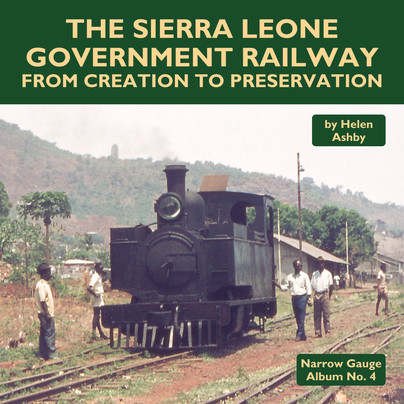
Format: Hardback
Pages: 120
ISBN: 9781900340755
Pub Date: 05 Jan 2021
Series: Narrow Gauge Album
Illustrations: 120
Description:
A 120 page hardback illustrated album by Helen Ashby, the Chair of the Friends of the Sierra Leone National Railway Museum, showcasing this idiosyncratic African narrow gauge system through all the eras of its operation. See the early optimism subside to a simple aspiration to survive, and then the remarkable story of its rediscovery in the aftermath of civil war through to its 21st century preservation in a project which, uniquely in West Africa, combines Government support, the will of the people, and the experience of a small group of determined Western preservationists.
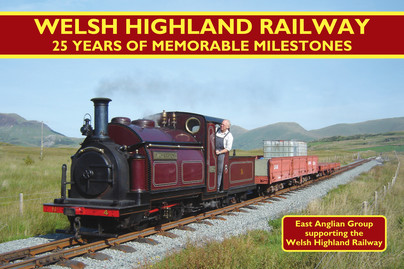
Format: Paperback
Pages: 64
ISBN: 9781900340656
Pub Date: 05 Jan 2021
Illustrations: 64
Description:
The rebuilding by the Ffestiniog Railway of the Welsh Highland Railway / Rheilffordd Eryri, a narrow gauge line through the heart of the Snowdonia National Park, was one of the most controversial of the millennium projects. In this softback illustrated album, compiled by the East Anglian Group supporting the Welsh Highland Railway from the photographs and memories of their members, the changes and memorable events (both positive and negative) that have occurred on the WHR between 1994 and 2019 are shown.
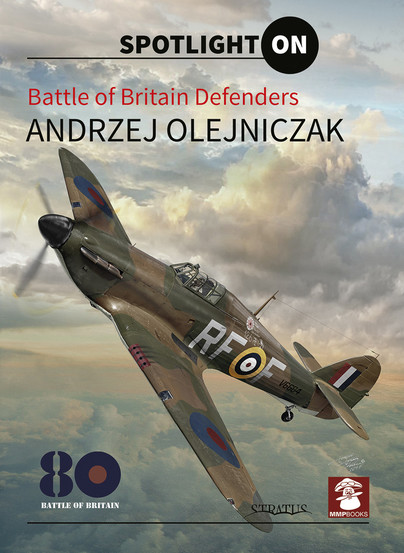
Format: Hardback
Pages: 44
ISBN: 9788366549142
Pub Date: 06 Nov 2020
Series: Spotlight ON
Illustrations: 40 color profiles
Description:
40 color profiles of the Hawker Hurricane I and Supermarine Spitfire I. Specially commissioned profiles with a high levels of detail.
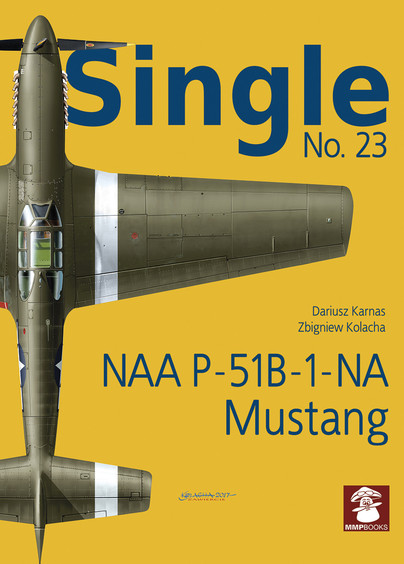
Format: Paperback
Pages: 24
ISBN: 9788366549159
Pub Date: 06 Nov 2020
Series: Single
Illustrations: Scale plans, color profiles, B&W photos, color photos
Description:
This book is a compilation of the 4-view color profiles, scale plans, and photo details of the single variant of the NAA P-51B-1-NA. Illustrated are plans in 1/72 and 1/48 scales plus drawings from wartime technical manuals. Also, photos of the details in B&W and color are included.
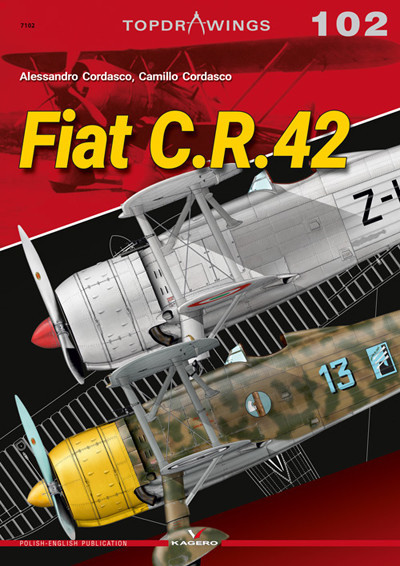
Format: Paperback
Pages: 24
ISBN: 9788366148376
Pub Date: 15 Oct 2020
Series: Top Drawings
Illustrations: drawings sheets; colour profiles
Description:
The Fiat CR 42 designed by Ing. Celestino Rosatelli, has the undoubted characteristic of being the last single-seat fighter biplane to be manufactured during the Second World War. It represents the final evolution of the aircrafts serie since Fiat CR 30 – 32 – 33 – 40 - 41, made during the 1935-1938 years in Turin.
The prototype flew the first time on 23 May 1938 and about 1800 Fiat CR 42 were produced, divided into 15 construction SERIE. There were no productive variants but only small changes along the SERIE due to various operational uses. Despite he was technically overtaken and outclassed by the opposing aircrafts, he honored his duties thanks to the skill and sacrifices of the Regia Aeronautica pilots who used it in almost all fronts war. He was also successfully exported and used in Belgium (Aeronautique Militaire Belge), Hungary (Magyar Kiraly Hoved Légiéro), Germany (Luftwaffe) and Sweden (Flygvapnet). Surviving aircraft were deployed in the post-war era by the Scuola Caccia Aeronautica Militare Italiana Lecce-Galatina airfield and for secondary services in Milano-Linate airfield during the 1950s, both single-seater and two-seater version.
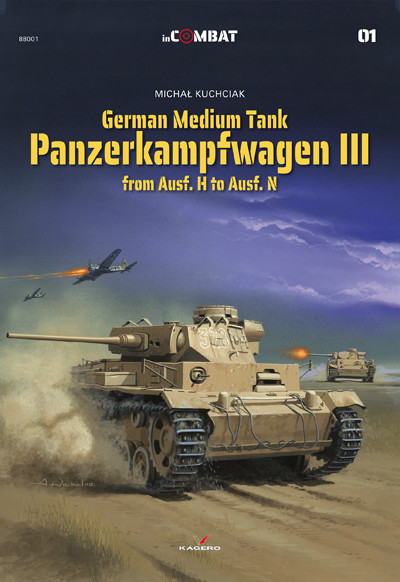
Format: Paperback
Pages: 80
ISBN: 9788366148901
Pub Date: 15 Oct 2020
Series: In Combat
Illustrations: drawings sheets; color profiles; archival photos
Description:
Hitler’s drive to modernize his armed forces gained a new momentum with the arrival on stage of Col. Heinz Guderian – the future spiritus movens of German armored warfare doctrine. Behind the scenes German design teams were busy working on prototypes of vehicles that would soon become the tools of the future war – light Pz.
Kpfw. I and II, heavy (in keeping with contemporary classification) Pz.Kpfw. IV and medium Pz.Kpfw. III armed with a 37 mm gun. In the early stages of fighting in France it became clear that the vehicle didn’t carry enough punch and in later marks of the tank the 37 mm main gun was superseded by a 50 mm weapon. The ultimate version of the Pz.Kpfw. III was armed with a short barrel 75 mm gun, the largest that the tank’s turret could accommodate.
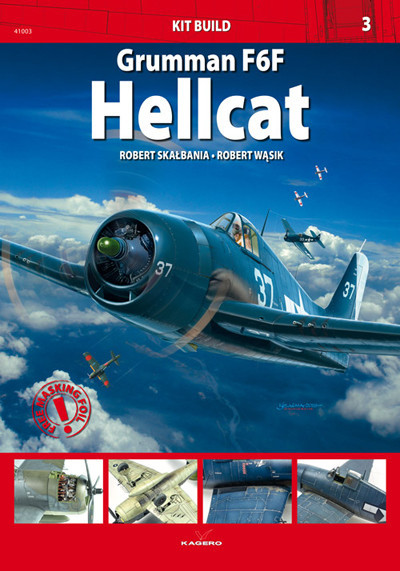
Format: Paperback
Pages: 56
ISBN: 9788366148949
Pub Date: 15 Oct 2020
Series: Kit Build
Illustrations: 120 photos; 6 colour profiles
Description:
Grumman F6F Hellcat was one of the best fighter aircraft of the World War Two era and the most effective fighter of the US Navy. There is no doubt that Hellcats won complete air superiority for the Americans over the vast areas of the Pacific, largely contributing to the victory over Japan.
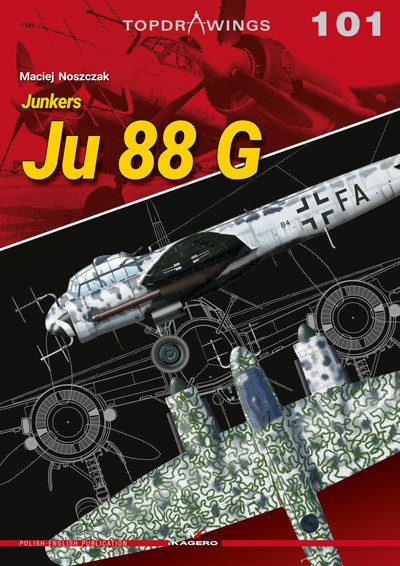
Format: Paperback
Pages: 20
ISBN: 9788366148642
Pub Date: 15 Oct 2020
Series: Top Drawings
Illustrations: drawings sheets; color profiles
Description:
Junkers Ju 88 was an extremely versatile and universal bomber. Among its many variants, there were also night versions. Initially, all Ju 88 night fighter versions were based on Ju 88 A frames, in which various specialized equipment was assembled.
The situation changed after the introduction of the Ju 88 G, which from the very beginning was designed as a night fighter. The fuselage of the aircraft was deprived of the lower gondola under the nose, which reduced the weight of the aircraft and improved its aerodynamics. Another visual change was the use of a square-shaped vertical stabilizer and a rudder, which was taken from Ju 188.
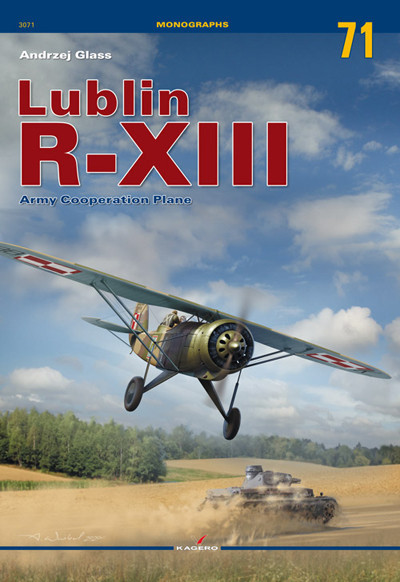
Format: Paperback
Pages: 132
ISBN: 9788366148314
Pub Date: 15 Oct 2020
Series: Monographs
Illustrations: 215 archival photos; 10 colour profiles; Drawings (1/72, 1/48, 1/32 scale)
Description:
The Lublin R-XIII was the Polish army cooperation plane, designed in the early-1930s in the Plage i Laśkiewicz factory in Lublin. Since 1927, they started working on their own prototypes. Those were designed by J.
Rudlicki and his team of more than a dozen people including engineers Marian Bartolewski, Jerzy Dąbrowski, Antoni Uszacki, Janusz Lange, Jerzy Teisseyre, Witold Grabowski, Jaworski and others. The factory’s first own product was a reconnaissance bomber Lublin R-VIII built in 1928. Its airliner variant, the R-IX, was constructed in a short while. In 1930, they produced a pilot series of 5 Lublin R-VIIIs, 3 of which were converted to seaplanes in 1932. At the beginning of 1929, they performed a test flight of a liaison aircraft prototype designated R-X; a pilot series composed of 5 examples was built in 1931. Prototypes of the Lublin R-IX airliner (1929) and Lublin R-XI airliner (1930) as well as its improved variant, the R-XVI, failed to meet the requirements of LOT Polish Airlines so the production was not started. However, 5 examples of an air ambulance variant R-XVI were built in 1933-1934. In 1931, they created the R-XII sport aircraft that was not put to use.
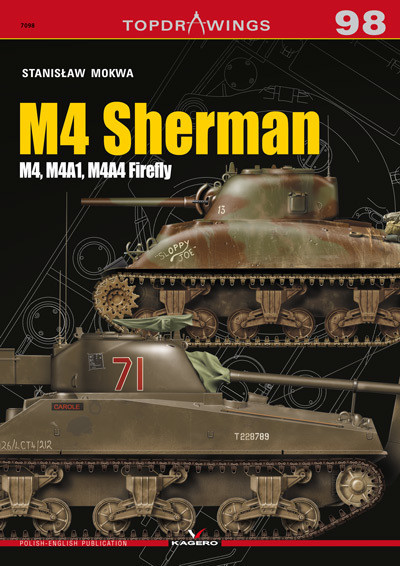
Format: Paperback
Pages: 20
ISBN: 9788366148932
Pub Date: 15 Oct 2020
Series: Top Drawings
Illustrations: drawings sheets; color profiles
Description:
M4 Sherman was the most popular American tank of World War II. Between February, 1942, and June, 1945, a total of 49.000 units of all versions were produced.
Dozens of variants of M4 tanks were created. They differed in the method of hull production (welded, riveted, casted) as well as turret, main armament and additional equipment. Several special versions were also made (especially for the needs of the Normandy landing in 1944): the floating Sherman DD (Duplex Drive), Sherman Crab (with anti-mine trawl), Sherman Dozer (with bulldozer at the front – for demining and engineering tasks), Sherman Zippo (Sherman with a flamethrower mounted instead of the main gun).
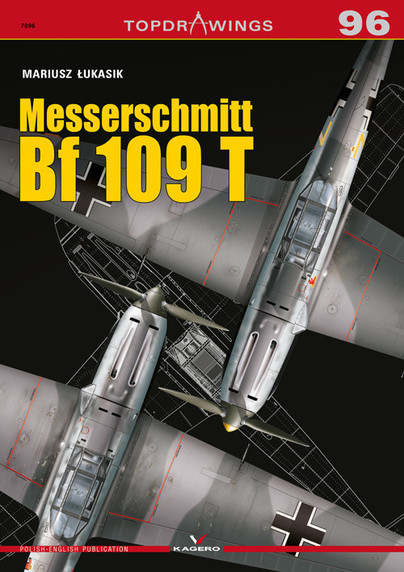
Format: Paperback
Pages: 20
ISBN: 9788366148888
Pub Date: 15 Oct 2020
Series: Top Drawings
Illustrations: drawings sheets; color profiles
Description:
Messerschmitt Bf 109T was supposed to operate from German aircraft carrier “Graf Zeppelin”. The plane was equipped with arresting hook and had enlarged wing span up to 11,08 m. It did not have folding wings because “Graf Zeppelin’s” elevators were supposed to be enough big to fit planes with fixed wings.
Anyway the wings could be detached for transport. There were versions T-1 and T-2 developed. Fighters served in JG 77 and JG 11 units.
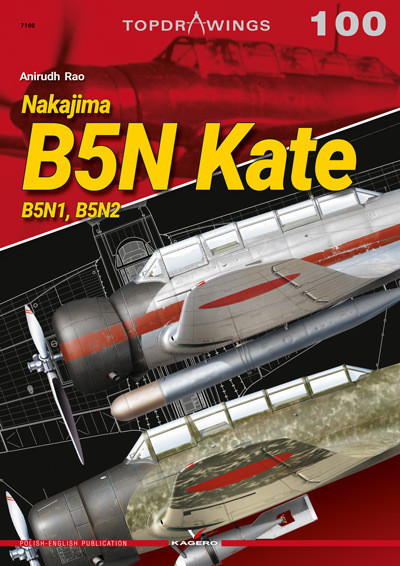
Format: Paperback
Pages: 20
ISBN: 9788366148635
Pub Date: 15 Oct 2020
Series: Top Drawings
Illustrations: drawings sheets; color profiles
Description:
The Nakajima B5N prototype, designated B5N1 (in Allied reported name: Kate), was flown in January 1937. The first serial aircraft carried the designation Model 98 Model 11. The machines were tested in combat in China.
In December 1939, another serial version entered the production marked as B5N2 Model 12. The aircraft was equipped with a Nakajima Sakae engine with a smaller frontal diameter and increased power. This improved plane’s performance. Initially, a hydraulic wing tip folding mechanism was used, but after a short time it was replaced with a manual one, which was more reliable.
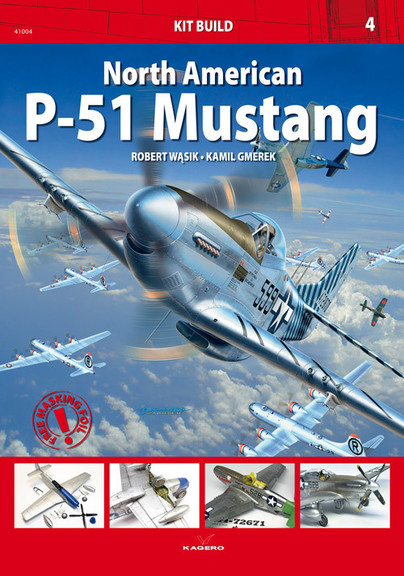
Format: Paperback
Pages: 56
ISBN: 9788366148659
Pub Date: 15 Oct 2020
Series: Kit Build
Illustrations: 135 photos; 4 colour profiles
Description:
The North American P-51 Mustang powered by the British-designed Rolls-Royce Merlin/Packard engine was, quite simply, the best long-range escort fighter of the World War Two era. Entering service in November 1943, it curtailed prohibitive losses suffered by the heavy bombers of the US Eighth Army Air Force which carried out the strategic daylight bombing campaign against the Third Reich.
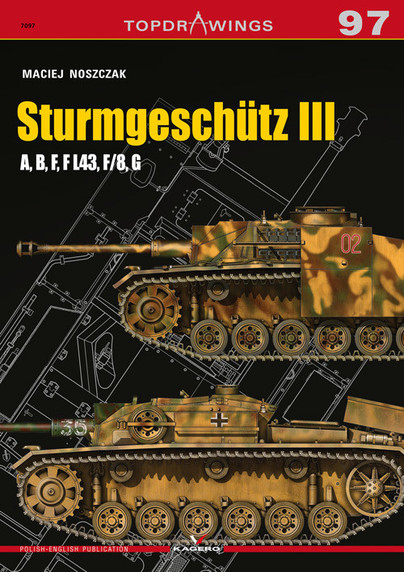
Format: Paperback
Pages: 20
ISBN: 9788366148895
Pub Date: 15 Oct 2020
Series: Top Drawings
Illustrations: drawings sheets; color profiles
Description:
First prototypes of German tank destroyer Sturmgeschütz III (StuG III) were built in 1937 and based on PzKpfw III Ausf. B tank. Vehicles were armed with short-barelled 75mm gun.
From spring, 1942, StuG IIIs were equipped with StuK 40 75mm gun. Self propelled guns StuG III served in separated assault artillery units, and later in self propelled guns brigades. They were also used in support units of armoured divisions.
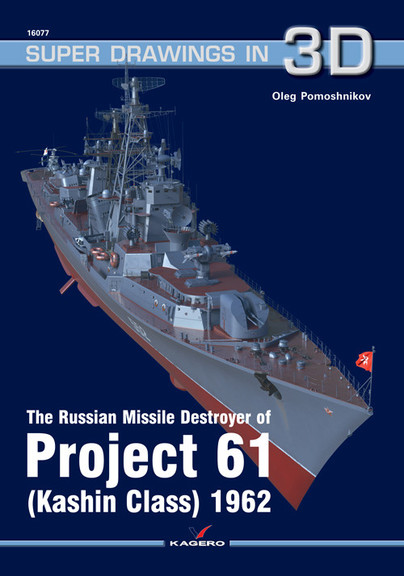
Format: Paperback
Pages: 96
ISBN: 9788366148673
Pub Date: 15 Oct 2020
Series: Super Drawings in 3D
Illustrations: 162 renders; drawings sheet B2
Description:
"Singing frigates", "Greyhounds of the Oceans" – each of this names contains a little bit of truth about large anti-submarine warfare ships Project 61. Since their emergence until now they are very popular with both: maritime specialists and shiplovers. It could not be otherwise, because they are exceptionally good looking vessels.
They were first Soviet units of the new generation, projected and built separate from foregoing schemes. Their uniqueness was not only based on beautiful architecture, but also on some other assets. First of all they were first ships in the world propelled only by the power of gas turbines.Landmark project
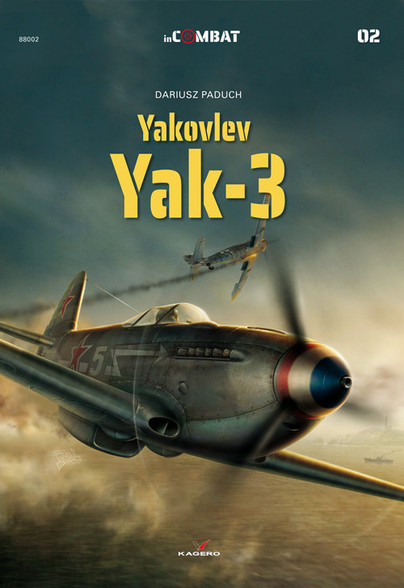
Format: Paperback
Pages: 72
ISBN: 9788366148918
Pub Date: 15 Oct 2020
Series: In Combat
Illustrations: drawings sheets; color profiles; archival photos
Description:
The IN COMBAT series is aimed for those who would like to quickly learn about fascinating history of specific vehicle, plane or ship. Every tome consist of most important information about history, versions and service of one combat machine. Book has tens of pages in A4 format and consists of dozens of interesting photos, colour illustrations, technical drawings and maps.
In every tome there is a free gift in form of masks or decals for modellers. Minimonographs IN COMBAT are the answer to many requests from our readers who asked us to make such series. Yakovlev Yak-3 is considered one of the best World War 2 fighters, invariably praised by those who flew it in combat for its remarkable performance. The Germans also treated it with respect, which is perhaps best illustrated by Generalleutnant Walter Schwabedissen’s remark: The Yak-3 was a tough nut to crack for our pilots. It outperformed our machines in speed, maneuverability and rate of climb.

















